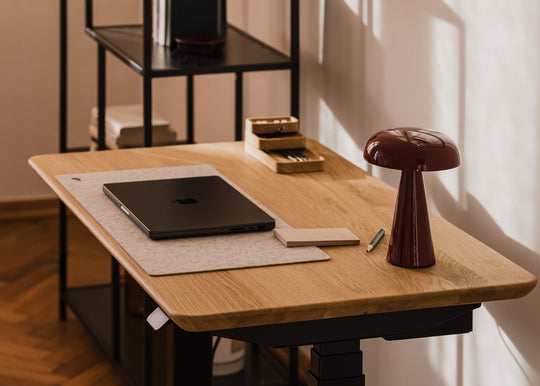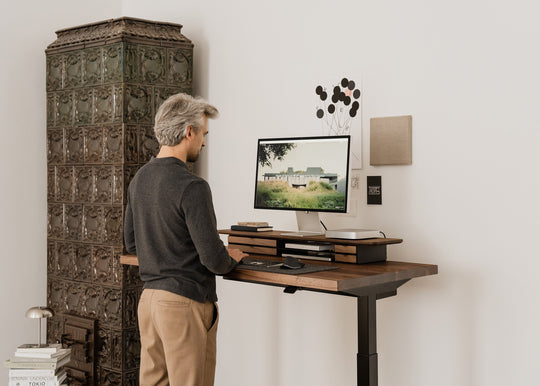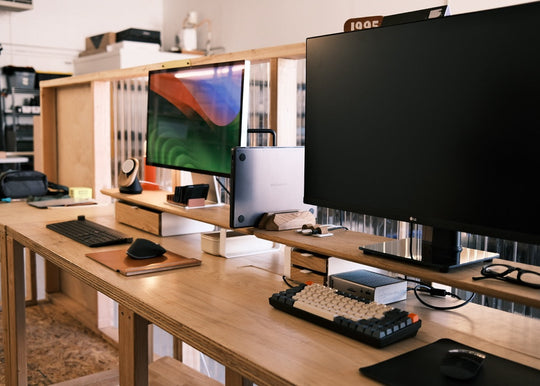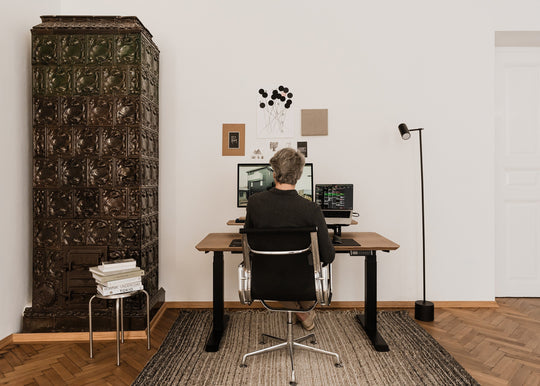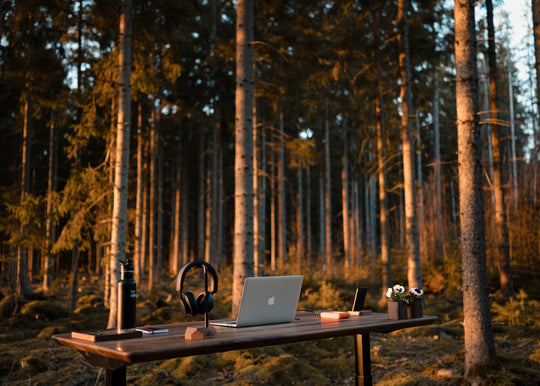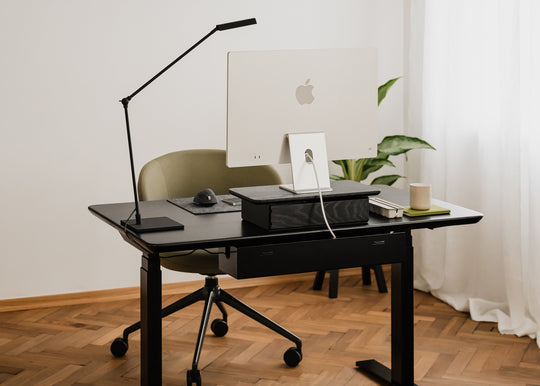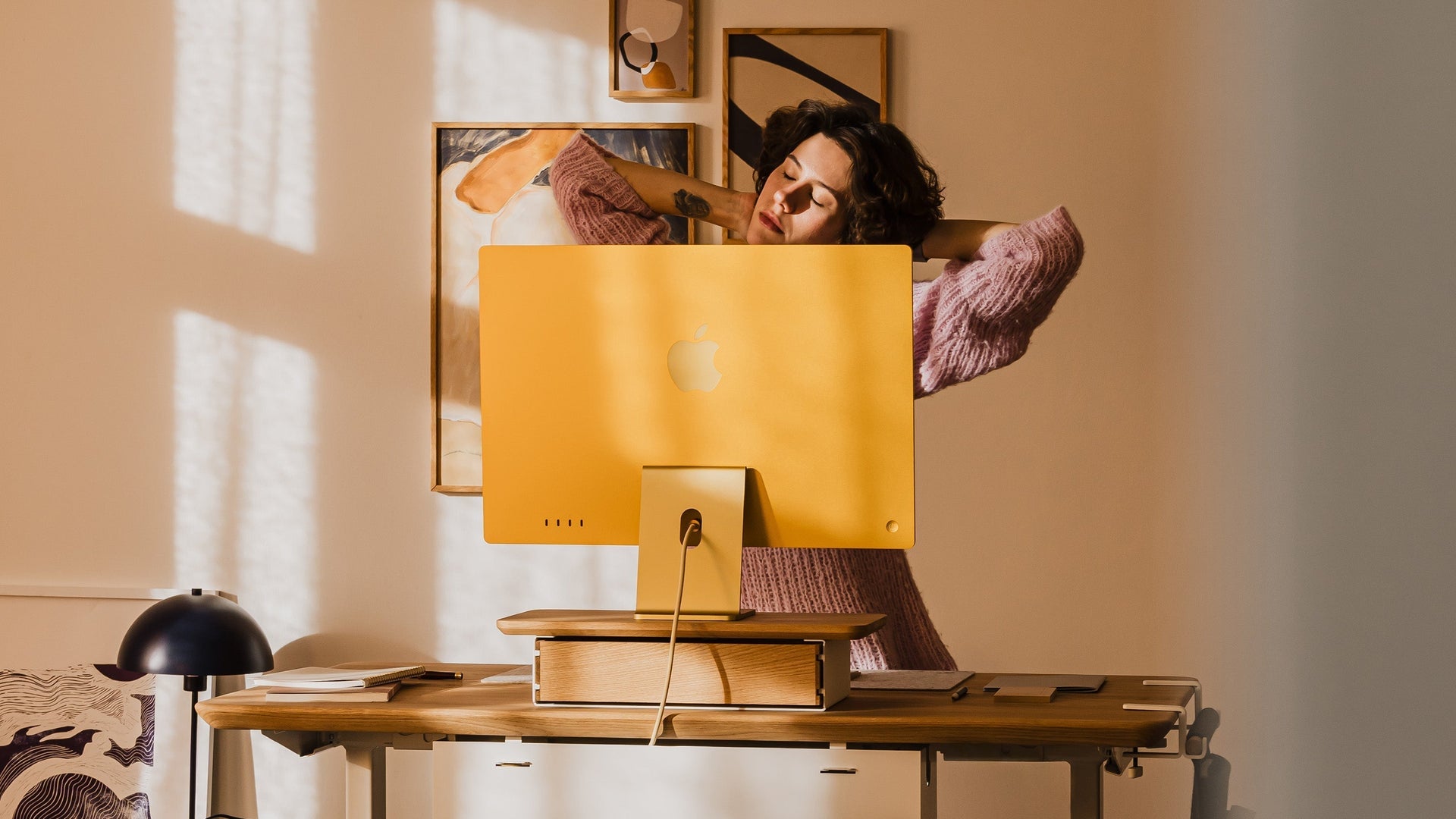
Create a workspace that helps you take better care of yourself
How can we properly take care of ourselves in this never-ending cycle of to-do lists, stress, looming deadlines, and important decisions? Of course, work and productivity matter. We do, however, need to recognize that health is a fragile matter which requires special attention so we should about how to protect it before issues arise. In addition to strategic work planning, regular breaks and adequate rest, the environment in which you work plays a crucial role. So how can you design a workspace that truly supports your well-being?

Ergonomics first
Any discussion about health and self-care in the workplace should always begin with ergonomics – a kind of foundation upon which the other levels of well-being can be safely built. A desk tailored to individual needs is the key component. The best choice for those who spend a lot of time in the office is a height-adjustable desk, because it allows for precise adjustment to your height and promotes spinal health by enabling seamless transitions between sitting and standing positions.
There are a few aspects I care about when it comes to my workspace. First of all, I need a standing desk so I can change positions every now and then. I’ve realized that this helps immensely when working a 9-to-5 job in front of a monitor.
I’ve started spending a couple of hours per day standing—especially during calls or when delivering webinars—and it has made a big difference. I paired my Oakywood standing desk with an Aeris mat, which allows me to shift positions frequently so my knees don’t suffer unnecessarily.
For peace of mind, I need a clutter-free office where everything I need is within reach but neatly stored away. I use lockers, drawers, and other storage solutions to keep the environment clean and inspiring.
The second item that must not be missing is an ergonomic chair. It should be height-adjustable so that your feet rest flat on the floor and your knees form a 90-degree angle. Proper lumbar support is also crucial – your chair’s backrest should align with your spine’s natural curve, providing solid support for your lower back.
Taking care of my well-being at work starts with an optimised setup that blends functionality, comfort, and aesthetics. My standing desk allows me to switch between sitting and standing, and my ergonomic chair (like the Hinomi X1) provides proper support. I also ensure my monitor is at eye level to reduce strain. A minimalist, well-organised desk keeps my mind clear. Using under-desk storage, cable management solutions.
Speaking of the desk, chair, and maintaining proper posture, it is also worth mentioning the optimal height of the screen: its top edge should be roughly at eye level. This will help you prevent neck strain and discomfort.
What do I need in my workspace to feel calm, safe and comfortable? A clean space, good lighting, and a comfy setup. I also like adding personal touches like a lamp, a plant, or some background music to keep the vibe right.
I make sure I take short breaks. I also set clear work boundaries, and step away from the screen when needed. A little movement and fresh air help a lot!

Optimal lighting
A friendly workspace can’t lack decent sources of light, especially natural light, which enhances mood and productivity. You will ensure adequate access to sunlight by positioning your desk facing or perpendicular to the window. As for artificial lighting, a ceiling light alone won’t suffice. A dedicated desk lamp is essential for illuminating your workspace directly.
Good lighting makes a huge difference. I use a mix of natural light and smart lighting (Philips Hue & Govee products) to create an ambient, adaptive workspace. Warmer tones for relaxation, cooler tones for focus.
Wanting to take better care of your eyesight, but also the quality of your sleep, consider minimizing blue light exposure, especially if you work in the evenings. You can use dedicated apps or invest in blue light-filtering glasses to mitigate its impact.
Lighting is also important to me, especially in winter, when it's gray outside for most of the day, I like the light to spread around the room from several small sources. I feel very comfortable because I work at the same desk with my husband – this definitely gives me the greatest sense of peace and security.
Good air quality
Even on the busiest day, taking a deep breath – both metaphorically and literally – is essential. Proper breathing helps minimize stress and tension, and thus contributes to more efficient and creative work. However, the quality of the air you breathe plays a big role in this. A home office should therefore have proper ventilation and the right level of humidity.
Regularly airing out the room is fundamental, but if outdoor air quality is poor (especially during the heating season), an air purifier with a humidifier can be a worthwhile investment.
Plants also help purify the air, and a diffuser with essential oils – carefully selected for focus, tranquility, or stress relief – can further enhance your workspace environment.
I recently bought some ambient scents because I want to engage all my senses. A visually pleasing office is great, but I don’t underestimate the power of a good scent—it can completely change your mood. I love smoky scents that make me feel like I’m in a cozy mountain cottage by a fireplace. That’s the kind of atmosphere I want in my office while working.

Reducing noise
Excessive noise is inherently disruptive, and unwanted noise at work significantly reduces productivity in the long run. If you live in a noisy area, noise-canceling headphones or high-quality earplugs can make a world of difference.
If you prefer to mask unwanted background noises with some more pleasant sounds, consider playing nature sounds, calm instrumental music (classical will work great), or white noise. But honestly, it can be any genre — make yourself a playlist that suits your personal workflow, keeping you focused and at ease.
Finally, music! I love music. When I want to enter a deep focus state, I usually pick a lo-fi playlist on Spotify—it immediately helps me concentrate on a task. When I’m coding, I prefer rock music to keep the energy flowing. I truly believe music is the fuel for my creativity.
Bring nature indoors
Beyond air purification, plants in your workspace offer numerous benefits. First of all, they create a calm atmosphere, help you relax and reacharge, ultimately boosting productivity. And in hot weather, they will help you lower the temperature in the room a bit by absorbing sunlight. It doesn't have to be a whole jungle or a full green wall (although the latter is worth considering if you want better noise reduction) – even two or three potted plants can make a significant difference.
My mind is always seeking stimulation, so I need my workspace to be extra visually calm. Natural elements like wood add warmth and balance, creating a grounding environment that helps me stay focused and relaxed. My grandmother passed down her love for wooden furniture and I’ve carried that appreciation into my own space, where natural, high-quality wood brings warmth and creates a grounding atmosphere that makes work more enjoyable.

Personalization in every detail
Finally, we can't help but mention one more important aspect that Oakywood particularly likes to embrace: personalization. The best workspace for health and productivity is one that’s perfectly tailored to the user’s individual needs. This applies to both functionality and aesthetics.
I add elements that make my space feel personal and inspiring, like plants for a touch of nature, a few aesthetic posters, and my favourite tech accessories that keep me efficient.
Design such a functional layout of the room in which you will feel as comfortable as possible. Opt for natural materials and your favorite colors, keeping in mind that some highly saturated hues can be visually overwhelming in excess.
Creating a home office that meets all your professional and personal needs is certainly a considerable challenge – it requires time and effort. But in the long run, the benefits of working in a thoughtfully designed space will exceed your expectations.

